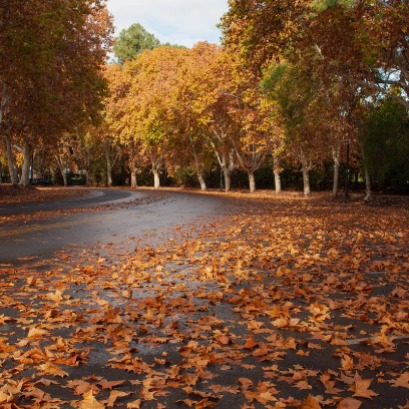
Why do the leaves of the trees change color in autumn?
In autumn, the trees exhibit a change in the color of their leaves as a result of the reduction of sunlight and the decrease in temperatures. All the details.
With the arrival of autumn, the leaves of the trees change color due to a natural process related to the reduction of sunlight and the fall of temperatures. As the days are shortened and the cold increases, in the trees other pigments that give the leaves give the leaves their yellow, orange, red and brown tones characteristic of this station. We tell you what it is. Why do the leaves of the trees change color in autumn? During spring and summer, the leaves of the trees remain green thanks to chlorophyll, the essential pigment for photosynthesis. This substance allows plants to capture sunlight and transform it into chemical energy for growth. However, as autumn approaches and shorten the days, the amount of sunlight decreases and temperatures descend. In response, trees stop the production of chlorophyll, since photosynthesis is reduced and is more expensive energy. Carotenoids are responsible for yellow and orange colors, while anthocyanins produce reddish or violet tones. The combination of these pigments, together with the cellular structure of each species, determines the color palette that characterizes autumn. The fall of the leaves allows the tree to reduce the loss of water and prepare for the winter, when the climatic conditions are more adverse. Thus, the color change of the leaves in autumn is the result of the interaction between environmental and physiological factors, and reminds us of the delicate balance of nature.
IT MAY INTEREST YOU
 The second largest wetland in South America is located in Argentina: what is it?
The second largest wetland in South America is located in Argentina: what is it?
Argentina has national parks that place it in a unique position within South America, competing with 300 others. Which is the largest? South America is home to more than 300 national parks, but many go unnoticed. There are extensive wetlands that have been the subject of major ecological restoration projects, to coastal mountains with deep indigenous heritage. Today we tell you the case of one located in Argentina.
 Botanists discover giant trees up to 3,��� years old in Tanzania, unknown until now by science
Botanists discover giant trees up to 3,��� years old in Tanzania, unknown until now by science
Scientists have identified a new species of giant tree, Tessmannia princeps, in the Udzungwa Mountains. This species had never before been recorded by science.
 The forest of the oldest shadows: the story of the petrified trees
The forest of the oldest shadows: the story of the petrified trees
One of the natural treasures of Río Negro turns 23 years old under the protection law that allows its conservation. Where it is and how it was formed. Río Negro celebrates 23 years of conservation in the petrified forest as a Protected Natural Area (ANP). It is a space of 625 hectares that protects an exceptional site of fossil trunks that date back more than 60 million years.





















